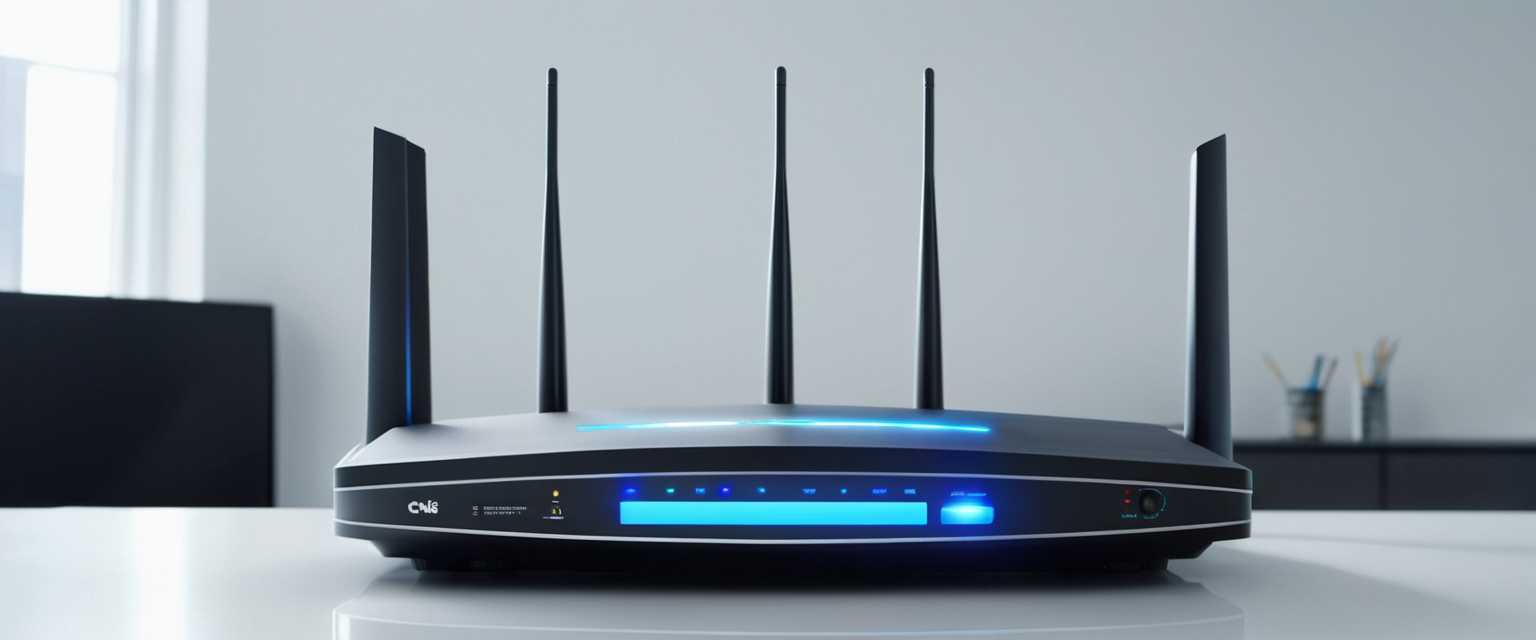
Changing your virtual private network (VPN) location has become an increasingly essential skill in today’s digital landscape, serving both practical and security-focused purposes for users worldwide. Whether you’re looking to access geo-restricted content, enhance your online privacy, or optimize your connection speed, understanding how to effectively change your VPN location is fundamental to maximizing the benefits of VPN technology. This comprehensive report examines the mechanisms, methods, considerations, and best practices associated with changing VPN locations across multiple platforms and use cases, providing an exhaustive exploration of this critical cybersecurity and privacy management technique.
Understanding VPN Location Fundamentals and Their Significance
What VPN Location Means in Practice
A VPN location refers to the geographic position of the server through which your internet traffic is routed after connecting to a virtual private network service. When you establish a VPN connection, your device communicates with a remote server operated by the VPN provider, and all your subsequent internet activity appears to originate from that server’s location rather than your actual physical position. This fundamental principle underlies the entire concept of location changing and represents a crucial shift in how your device interacts with the internet. The VPN server essentially acts as an intermediary, masking your true IP address and replacing it with the server’s IP address, which carries geographic information about the server’s jurisdiction.
Understanding this mechanism is essential because it directly impacts not only your apparent location but also your access to region-specific content and services. When you connect to a VPN server in the United Kingdom, for example, websites and streaming services will identify your connection as coming from the UK, even if you’re physically located thousands of miles away. This geographic spoofing capability creates the foundation for many legitimate VPN use cases, from accessing regional Netflix libraries to conducting business securely across international borders. The process relies on the fact that websites and online services primarily use IP address geolocation to determine user location, rather than relying on GPS or other more direct location detection methods.
Why Changing VPN Location Matters
The ability to change your VPN location serves multiple critical purposes that extend beyond simple entertainment or novelty applications. From a security perspective, changing your VPN location regularly can help prevent pattern recognition by ISPs, websites, and other monitoring entities that might attempt to build comprehensive profiles of your online behavior. By rotating through different server locations, particularly in privacy-friendly jurisdictions, you create additional layers of obfuscation around your browsing patterns and habits. This practice is particularly important for individuals who are concerned about advanced surveillance techniques or who work with sensitive information that requires heightened anonymity measures.
Beyond security considerations, changing VPN location provides practical access to geographically restricted content and services. Streaming platforms, news websites, and other online services frequently enforce content licensing agreements that restrict access based on geographic location. By connecting to a VPN server in the appropriate country, users can access these services as if they were physically present in that region. Furthermore, changing VPN location can help optimize connection speed and overall network performance by allowing users to select servers closest to their actual location, thereby minimizing latency and maximizing bandwidth efficiency. In some cases, users operating under internet censorship may need to rotate through multiple locations to find servers that are not blocked by local authorities, making location flexibility a matter of accessing basic internet freedom.
Fundamental Methods for Changing VPN Location Across Devices
Basic Process Overview and Core Components
The fundamental process of changing VPN location remains relatively consistent across all modern platforms, though specific implementation details vary based on operating system architecture and VPN application design. The general methodology involves launching your VPN application, accessing the location or server selection interface, identifying your desired destination from available options, and initiating a connection to that specific server. This simplicity belies the sophisticated networking technology operating behind the scenes, as the VPN client must properly configure encryption protocols, establish authentication credentials, and manage complex routing tables to ensure your connection is properly tunneled through the selected remote server.
The three core components necessary for any VPN setup include a VPN client (the software installed on your device), a VPN server (the remote computer operated by the VPN provider), and a VPN router (which manages the encrypted tunnel and traffic flow). Modern VPN applications typically integrate all necessary functionality into a single, user-friendly interface, eliminating the need for users to manually configure complex networking parameters. When you change VPN location, you’re essentially instructing your VPN client to establish a new connection to a different VPN server, which requires disconnecting from the current server and going through the authentication and handshake process with the new server.
Windows Operating System Implementation
Windows users have become the largest demographic of VPN users, and changing VPN location on Windows systems is remarkably straightforward when using a dedicated VPN application. The process begins by downloading and installing a reputable VPN application from the provider’s official website or the Microsoft Store. Once installed, users should log in with their VPN account credentials, which authenticates their subscription and provides access to the full server network. From the application’s main interface, typically called the Locations tab or Servers list, users can browse available countries and specific server locations.
To change location on Windows, users should open their VPN application and look for a Locations section displayed either as a menu tab or a dedicated button within the interface. Most modern VPN applications provide a global map showing available server locations alongside a searchable list organized by country and sometimes by city or specific server name. Users can then click on their preferred location, which may present multiple server options within that country, and select “Connect” to establish the VPN connection. Once connected, the application displays confirmation that the connection is active and typically shows the new IP address assigned to the user, the server location, and sometimes additional information such as connection speed and encryption protocol.
macOS Configuration Process
macOS users follow a similar process to Windows users when utilizing dedicated VPN applications, with minor variations reflecting macOS interface design conventions. The installation process remains consistent with downloading from the provider’s website or Mac App Store, followed by launching the application and signing in with account credentials. macOS VPN applications typically provide a menu bar icon when installed, allowing quick access to connection controls and server selection without requiring users to open the full application window.
For users who prefer to use macOS’s built-in VPN capabilities rather than third-party applications, the process involves accessing System Preferences or System Settings (depending on the macOS version), navigating to the Network section, and adding a new VPN configuration. Users must then input the VPN server address, connection protocol, authentication credentials, and other technical details provided by their VPN provider. While this manual configuration approach offers greater control and transparency, it requires users to understand networking concepts and is more time-consuming than using a dedicated VPN application. Once configured, users can connect to the VPN from the Network settings panel, though changing between multiple server locations requires either reconfiguring the existing connection or creating multiple separate VPN configurations.
iOS and iPhone Location Changes
Changing VPN location on iOS devices involves downloading a VPN application from the Apple App Store and following the installation and login process. iOS users typically have access to the same VPN providers available on desktop platforms, though the app interfaces are necessarily adapted for touch-based interaction and smaller screen sizes. Once installed and logged in, the VPN app displays available server locations in a format optimized for mobile browsing, often featuring a search function to quickly locate specific countries or regions.
The process involves opening the VPN application, tapping on the Locations or Servers option, searching for or scrolling to the desired country or city, and tapping Connect. iOS applications typically require users to grant permission for the VPN to create VPN configurations on their device, which appears as a system dialog that users must accept. Once connected, the iOS status bar displays a VPN indicator, confirming that traffic is being routed through the selected server. Changing to a different location requires opening the app again, selecting a new server, and tapping Connect, which automatically disconnects the previous server and establishes a new connection.
Android Platform Procedures
Android users follow a parallel process to iOS users, downloading VPN applications from the Google Play Store and going through similar authentication and permission-granting procedures. Android VPN applications typically provide location selection through either a scrollable list, a searchable database, or a map interface showing available servers. Many Android VPN apps include a Quick-Connect feature that automatically selects and connects to the fastest available server, which is particularly useful for users who prioritize speed over specific location requirements.
To change location on Android, users open their VPN application, navigate to the Locations section, and select their preferred destination. As with iOS, Android will prompt users to grant permission for the VPN application to create VPN configurations on the device. Android applications often provide additional customization options compared to iOS, reflecting Android’s more open architecture, though the fundamental process of changing locations remains consistent.
Linux Terminal and GUI Methods
Linux users have the most flexibility in VPN configuration but also typically require more technical knowledge. The terminal-based approach involves installing OpenVPN or WireGuard packages through the system’s package manager, downloading configuration files from the VPN provider, and initiating connections through command-line interfaces. For example, users can install OpenVPN with commands like `sudo apt-get install openvpn` and then connect to a specific server using `sudo openvpn –config [configuration-file.ovpn]`.
To change locations using the terminal method, users must disconnect from the current server and reconnect using a different configuration file corresponding to their desired destination. More user-friendly approaches involve using the Network Manager GUI tool, which provides a graphical interface for managing VPN connections without requiring command-line proficiency. Linux users can access Network Manager through their system settings and configure multiple VPN connections, each pointing to different server locations, allowing them to switch between locations through the GUI similar to macOS or Windows users.
Detailed Platform-Specific Implementation Guides
Desktop Application Installation and Configuration
Regardless of operating system, desktop VPN applications follow a consistent installation and configuration workflow that serves as the foundation for all subsequent location changes. Users should begin by visiting their chosen VPN provider’s official website and navigating to the downloads section to obtain the correct installer for their specific operating system and architecture (32-bit or 64-bit for Windows systems, universal for macOS). Downloading from official sources rather than third-party platforms is critical for ensuring security and avoiding potentially compromised or modified versions of the software.
After downloading, users should install the application by executing the installer and following any prompts or configuration wizards. Most modern VPN applications handle configuration automatically, requiring only basic authentication information during installation. Users should then launch the application, log in with their subscription credentials, and verify that the authentication was successful by confirming they have access to the server list. Before changing to a new location, users should test their initial connection to their nearest server to ensure the installation was successful and their VPN subscription is active.
Mobile Application Setup Workflows
Mobile VPN application setup begins with downloading from either the Apple App Store or Google Play Store, depending on device type. Unlike desktop applications, mobile apps typically handle installation more gracefully due to the curated nature of these app stores and the sandboxed environment in which apps operate. After installation, users should launch the application, create an account or log in with existing credentials (many providers offer free trials), and grant necessary permissions when prompted.
Mobile operating systems require explicit permission for VPN applications to create VPN configurations, which protects user security by preventing unauthorized VPN access. Users will see a system-level dialog requesting permission to allow the VPN app to create VPN configurations, which they must accept to proceed. Once permissions are granted, the application becomes fully functional, and users can begin selecting server locations and establishing connections.

Router-Based VPN Configuration
For users who want to protect multiple devices without installing VPN applications on each individual device, router-based VPN installation provides a comprehensive solution. This approach involves accessing the router’s administration interface through a web browser or dedicated application, navigating to VPN settings (often found under Advanced or Network settings), and configuring VPN details provided by the VPN provider. The process varies significantly based on router model and manufacturer, though most modern routers support popular VPN protocols like OpenVPN or WireGuard.
After initial configuration, changing locations on a router-based VPN installation may require either manually modifying configuration files through the router’s interface or, on more advanced routers running custom firmware like OpenWrt, using a script to automate location changes. While this approach provides comprehensive protection, it requires more technical expertise than using dedicated VPN applications and may not offer the simplicity of clicking a button to change locations on demand.
Choosing and Evaluating VPN Server Locations
Factors Influencing Location Selection
The process of selecting an optimal VPN server location extends far beyond simply choosing a country at random, as multiple interconnected factors influence connection quality, speed, privacy level, and content accessibility. Geographic distance from the user’s actual location represents one of the most significant factors affecting connection speed and latency. Generally, the closest server to a user’s physical location will provide the fastest connection, as network packets must travel shorter distances and encounter fewer network hops between the client and server. However, this proximity benefit must be balanced against privacy considerations, as connecting to a server in your home country may provide less privacy benefit than connecting to a distant server in a privacy-friendly jurisdiction.
Internet infrastructure quality varies significantly across regions, making this another critical consideration when selecting server locations. Countries with modern, well-developed internet infrastructure, such as Switzerland, Singapore, and Romania, typically offer better overall performance than regions with less developed networks, even when geographic distance is greater. Additionally, some VPN providers maintain more servers in certain countries than others, affecting both speed through load distribution and availability during peak usage times. A country with numerous available servers allows traffic to be distributed across multiple machines, preventing any single server from becoming overloaded, whereas countries with limited server options may experience congestion.
Jurisdiction and Surveillance Considerations
Perhaps the most important consideration for users prioritizing privacy involves the jurisdiction where servers are physically located, as this determines which government agencies can potentially compel the VPN provider to disclose user information. Surveillance alliances such as Five Eyes (United States, United Kingdom, Canada, Australia, New Zealand), Nine Eyes (adding Denmark, France, Netherlands, and Norway), and Fourteen Eyes (adding Germany, Spain, Belgium, and Sweden) have established formal intelligence-sharing agreements that may facilitate rapid information sharing between member countries. VPN users prioritizing privacy typically prefer to route traffic through servers located in non-member countries such as Panama, Switzerland, Iceland, or Costa Rica.
It is crucial to note that physical server location differs from VPN provider headquarters location, and both matter for privacy considerations. A VPN provider headquartered in a Five Eyes country but operating servers in privacy-friendly jurisdictions may still be subject to government pressure in their home country. Conversely, some VPN providers based outside surveillance alliances may rent server space from data centers located in Five Eyes countries, potentially creating legal obligations to respond to local authorities. Users should thoroughly research both where a VPN provider is headquartered and where its servers are physically located before making location selections based on privacy criteria.
Content Availability and Streaming Optimization
For users seeking to access geographically restricted content, server location selection becomes directly tied to content availability. Streaming platforms maintain separate content libraries for different regions based on licensing agreements, meaning a user in Europe seeking to access Netflix’s full American library must connect to a server located in the United States. Similarly, users wanting to access British Broadcasting Corporation content must connect to a UK-based server. Research into which streaming services maintain content in which regions helps users identify optimal server locations for their specific streaming preferences.
Some VPN providers publish information about which servers work best with specific streaming services, as certain servers become flagged by streaming platforms and cease to function properly. A server that reliably unblocks Netflix on one day may become blocked within weeks as streaming services deploy increasingly sophisticated detection mechanisms. Selecting a VPN provider with a large, regularly updated server network in content-rich regions increases the likelihood of successful streaming access.
Specialized Location Requirements
Certain use cases require location selection based on highly specific requirements beyond simple streaming access or generic privacy needs. Users interested in online gambling, for instance, must select locations in jurisdictions with favorable gambling regulations, with Canada and the United Kingdom being particularly popular choices due to their relatively relaxed regulatory environments. Users concerned about internet censorship and government surveillance in their home country may benefit from connecting through servers in countries known for strong privacy protections and minimal government internet control.
For users engaged in torrenting and peer-to-peer file sharing, selecting locations in countries with favorable copyright laws and minimal enforcement represents an important consideration. Users should research the legal landscape in their target location and the VPN provider’s policies regarding P2P traffic before connecting to specific servers for torrenting purposes. Some VPN providers explicitly permit torrenting only on certain designated servers, while others offer it network-wide. Understanding these distinctions prevents users from violating their VPN provider’s terms of service or selecting inappropriate servers for their intended use.
Advanced VPN Location Features and Optimizations
Smart Location Technology and Automatic Optimization
Leading VPN providers have developed Smart Location features that automatically select optimal server locations based on real-time network conditions rather than requiring users to manually select servers. ExpressVPN’s Smart Location feature exemplifies this approach, automatically analyzing metrics such as download speed, latency, and geographic distance to identify the server that will provide the best user experience for each individual user’s network conditions. This technology proves particularly valuable for users who prioritize connection speed and reliability over specific location requirements, as it eliminates the need for users to understand complex network performance metrics.
Smart Location features typically work by running continuous background tests of server performance, collecting data about response times and available bandwidth across the VPN provider’s global network. When a user initiates a connection through Smart Location, the system’s algorithms analyze this performance data along with the user’s geographic location and selects the server most likely to provide optimal performance. For users concerned about privacy rather than performance, Smart Location may not be ideal, as the feature prioritizes speed over selection of privacy-friendly jurisdictions. However, for general-purpose VPN users seeking reliable, fast connections without the complexity of manual server selection, Smart Location provides genuine value.
Multi-Hop and Double VPN Implementation
Multi-hop VPN functionality, sometimes marketed as Double VPN or triple VPN depending on the number of hops, routes user traffic through multiple VPN servers sequentially, with each server adding an additional layer of encryption. This approach theoretically increases privacy and security by ensuring that no single VPN server knows both the user’s original IP address and their final destination. The first VPN server in the chain knows the user’s real IP but cannot decrypt the final destination, while the second server knows the destination but cannot determine the user’s real IP address.
However, users implementing multi-hop VPN should understand that this additional privacy comes at significant performance cost. Each additional hop adds latency to connections, as network packets must travel through additional servers before reaching their final destination. For a two-hop configuration, for example, latency increases substantially compared to single-hop VPN, and adding a third hop compounds these delays even further. Most security experts argue that multi-hop VPN provides minimal practical privacy benefits for typical users compared to high-quality single-hop VPN from a reputable provider, and is primarily valuable for individuals in extreme threat scenarios such as journalists in hostile countries or activists under government surveillance.
Split Tunneling and Selective Location Routing
Split tunneling represents an advanced VPN feature that allows users to route certain applications or traffic types through the VPN while allowing other traffic to use the regular internet connection. This capability enables sophisticated location-based networking arrangements where, for example, a user might route banking applications through a VPN server in their home country (maintaining compatibility with bank security systems) while routing streaming applications through a VPN server in the United States (accessing US content libraries). Proton VPN, NordVPN, and several other providers offer split tunneling functionality, though implementation details vary between providers.
Implementing split tunneling with location changes requires understanding how individual applications and their traffic flows interact with VPN routing rules. On Windows, users can specify individual applications to exclude from or include in VPN tunneling, while on macOS, split tunneling remains an experimental feature with certain limitations. On Android, split tunneling allows users to select individual apps for VPN routing, providing significant flexibility for users who want different applications to appear as if they’re in different geographic locations. This advanced functionality transforms VPN technology from a binary on/off tool into a sophisticated networking instrument capable of managing complex, location-specific requirements.
Troubleshooting and Resolving Location Change Issues
Addressing DNS Leaks and Location Detection Failures
One of the most frustrating issues users encounter involves changing VPN location successfully (as confirmed by the VPN application) but finding that their apparent location according to websites remains unchanged or reverts to their true location. This discrepancy typically results from DNS leaks, where domain name system queries bypass the VPN tunnel and route directly to ISP DNS servers, revealing the user’s true location to any website tracking such requests.
To diagnose DNS leaks, users should visit online testing tools like dnsleaktest.com or ipleak.net while connected to a VPN and verify that the reported DNS servers match those provided by their VPN provider rather than their ISP. If DNS leaks are detected, users should first attempt to change VPN protocols or servers, as the issue may be specific to particular configurations. More persistent DNS leak problems can often be resolved by ensuring the VPN application is using only VPN-provided DNS servers rather than system-level DNS settings.
For advanced users willing to manually configure DNS settings, changing system DNS configuration to use either VPN provider DNS or trusted third-party DNS services like OpenDNS or Cloudflare can resolve persistent issues. On Windows, users can modify DNS settings through the Network settings panel, while macOS and Linux users can edit the /etc/resolv.conf file or use system preferences. Some VPN providers include options to automatically handle DNS configuration, enabling users to simply toggle a setting rather than manually modifying system files.
WebRTC and GPS Geolocation Bypass
Beyond DNS leaks, websites can detect user location through multiple additional mechanisms that bypass IP-based geolocation. WebRTC (Web Real-Time Communication) protocol, used for video conferencing and real-time media, can leak the user’s true IP address even when connected to a VPN, as the protocol’s STUN (Session Traversal Utilities for NAT) server discovery process may inadvertently expose local IP addresses. Additionally, GPS hardware present on mobile devices provides extremely precise location data that websites can request through browser geolocation APIs, completely bypassing VPN IP masking.
To prevent WebRTC leaks, users can install browser extensions designed to disable WebRTC (though this may break some legitimate web applications), manually disable WebRTC in browser settings (by setting media.peerconnection.enabled to false in Firefox, for example), or use browsers that disable WebRTC by default. On mobile devices, users should disable location services entirely if they want to ensure websites cannot detect their true location through GPS, though this may limit functionality of legitimate location-dependent applications.

Connection Failure and Server-Specific Issues
Users occasionally encounter situations where changing to a specific VPN location repeatedly fails, with the VPN application refusing to establish a connection or the connection dropping immediately after establishment. These server-specific issues often result from server overload, temporary service disruptions, or blocking by network administrators or ISPs targeting that particular server. The first troubleshooting step involves changing to a different server location within the same country, which often resolves the issue by distributing load across multiple servers.
If changing servers within a region fails to resolve connectivity problems, users should attempt changing both server and protocol, as certain protocols may be blocked on their network while others function normally. Switching from OpenVPN to WireGuard, from UDP to TCP, or trying IKEv2/IPsec can circumvent protocol-specific blocking. Users experiencing persistent connection failures on all servers should verify their internet connection by disabling the VPN entirely and confirming internet connectivity, test connecting from a different network (such as mobile hotspot or a coffee shop’s WiFi), and contact their VPN provider’s customer support if problems persist.
IP Leak Detection and Verification
After successfully changing VPN location, users should verify that their connection change actually resulted in the expected new location appearing to websites. This verification process involves checking the user’s apparent IP address using tools like whatismyipaddress.com, comparing the reported location to the selected VPN server location, and confirming that the IP address differs from their true IP address. Most importantly, users should check that DNS leak testing shows only DNS servers provided by their VPN provider, not their ISP’s DNS servers.
Advanced IP leak testing can be performed using specialized tools that check for DNS leaks, WebRTC leaks, and IPv6 leaks (which may expose true IP address on systems with IPv6 enabled despite IPv4 VPN connectivity). Some VPN providers include built-in leak detection tools within their applications, providing convenient one-click testing. Regular verification that location changes are functioning properly prevents users from inadvertently exposing their true location to websites and services they believed to be protected.
Security and Privacy Implications of Location Changes
Jurisdictional Considerations and Legal Implications
The jurisdiction where users connect through VPN servers carries significant legal and security implications that extend beyond simple privacy concerns. Users should understand that by connecting through a VPN server in a particular country, they are effectively routing their internet traffic through that jurisdiction’s physical and legal space, potentially exposing themselves to that country’s laws and regulations. For example, certain content that is legal in the user’s home country may be illegal in the country where their VPN server is located, creating potential legal complications.
Furthermore, VPN users in countries with strict data retention laws must consider whether connecting to servers in such countries could result in their online activity being logged and retained by local authorities. Conversely, users in countries with government surveillance or censorship may deliberately seek VPN providers operating servers in privacy-friendly jurisdictions specifically to avoid such legal complications. This interplay between user location, server location, and applicable laws requires careful consideration and research before committing to specific VPN provider and location combinations.
Trust and Transparency in VPN Provider Selection
Selecting where to route VPN traffic ultimately depends on trusting that the VPN provider will appropriately handle and protect user data. VPN providers claiming to have no-logs policies (meaning they do not retain records of user activity) should be scrutinized carefully, as verified evidence supporting such claims is relatively rare. Users should research whether their chosen VPN provider has submitted to independent security audits, whether the provider has been transparent about responding to government requests for user information, and whether verified incidents of the provider compromising user privacy have ever occurred.
VPN provider headquarters location represents another crucial trust factor, as a provider’s home country jurisdiction determines what legal authorities can compel them to disclose. A VPN provider based in the United States, for instance, can theoretically be compelled through legal mechanisms to turn over user information to government agencies, even if they operate servers outside the United States. For maximum privacy and security, users should prioritize VPN providers based in jurisdictions with strong privacy laws and no intelligence-sharing agreements with other countries, though they should also verify that the provider operates its own servers in similarly privacy-friendly locations.
Encryption Standards and Protocol Selection
The technical implementation of VPN encryption varies significantly between providers and can substantially affect security and privacy outcomes. Users should verify that their chosen VPN provider uses strong encryption standards such as AES-256, which represents the gold standard for symmetric encryption and is considered secure against even advanced cryptographic attacks. Some VPN providers offer choice between different encryption levels, allowing users to trade security for speed by selecting lower encryption standards if necessary, though this is generally not recommended for serious privacy applications.
Similarly, users should ensure their VPN provider offers modern, well-audited VPN protocols such as OpenVPN or WireGuard rather than outdated protocols like PPTP (Point-to-Point Tunneling Protocol) or L2TP (Layer 2 Tunneling Protocol), which have known security vulnerabilities. The choice between OpenVPN and WireGuard involves tradeoffs between established security (OpenVPN has been extensively audited and peer-reviewed for over two decades) and modern efficiency (WireGuard offers improved performance and is based on more contemporary cryptographic standards).
Performance Implications and Connection Quality Considerations
Latency, Speed, and Distance Relationships
Changing VPN location necessarily introduces latency and reduces bandwidth compared to direct internet connections without VPN, as the user’s traffic must be routed through a remote server before reaching its final destination. The magnitude of these performance impacts depends primarily on the geographic distance between the user and the selected VPN server. A user in New York connecting to a VPN server in Los Angeles will experience much less latency increase than a user connecting to a server in Tokyo or Singapore, as network packets must travel substantially greater distances.
Understanding the relationship between distance and latency is important for users attempting to optimize VPN location selection. Network latency increases as \(1 \text{ millisecond} \approx 200 \text{ kilometers of distance}\), meaning that crossing continents adds hundreds of milliseconds to round-trip times. For users primarily concerned with privacy rather than speed, connecting to distant servers in privacy-friendly jurisdictions may be worth the performance penalty. For users prioritizing streaming quality or real-time applications, selecting a server closer to their actual location becomes essential to maintain acceptable video quality and responsiveness.
Server Load and Overcrowding Effects
VPN providers operating multiple servers in the same geographic region distribute user connections across these servers, preventing any single server from becoming overloaded and degrading performance for all users connected to it. When a VPN provider offers numerous server options in a region (for instance, NordVPN’s 7,000+ servers across 118+ countries), users can distribute their connections across multiple relatively lightly-loaded servers rather than concentrating on a few popular options. Conversely, VPN providers operating limited numbers of servers in certain regions may experience performance degradation during peak usage times as those servers become overloaded.
Users experiencing slow VPN performance should attempt changing to a different server in the same location or region, as this single change often dramatically improves speed and responsiveness. Many VPN applications include server load information displayed as a percentage or visual indicator, allowing users to deliberately select less-loaded servers and optimize performance without needing to understand complex network load balancing concepts.
ISP Throttling and Bandwidth Optimization
In certain scenarios, changing VPN location can actually improve user connection speed rather than degrading it, specifically when dealing with ISP throttling or targeted speed restriction. Some internet service providers deliberately throttle bandwidth for specific services or protocols they deem undesirable (such as video streaming or peer-to-peer traffic), reducing these activities’ speeds while maintaining normal speeds for web browsing or other approved uses. By routing traffic through a VPN, users can obscure the nature of their activities, preventing ISPs from identifying and throttling specific traffic types.
This represents one of the few scenarios where VPN connections can demonstrate genuine speed improvements for end users, though the benefit remains contingent on the VPN’s encryption successfully obscuring activity type from the ISP. It is important to note that while VPNs can overcome ISP throttling of specific services, they cannot overcome hard bandwidth caps or speed limit tiers imposed at the ISP level, as these restrictions apply to the overall VPN connection speed rather than specific traffic patterns.
Best Practices and Recommendations for Effective Location Changes
Establishing Personal Location Change Strategy
Users should develop a personal strategy for VPN location selection based on their specific needs, threat model, and use case preferences. For users primarily seeking privacy enhancements during general web browsing, connecting to a server in any privacy-friendly jurisdiction several countries away from their home provides substantial privacy benefits without requiring optimization for speed. For users seeking to access specific geo-restricted content, research into content availability in different regions combined with deliberate location selection enables reliable access to desired services.
For users in high-threat scenarios such as journalists reporting from authoritarian countries or activists working in censorship-heavy regimes, VPN location selection becomes critical and should emphasize jurisdictions and providers known for strong privacy protections, government resistance to data requests, and minimal collaboration with authoritarian regimes. These users should prefer VPN providers offering no-logs policies supported by independent audits and should rotate through multiple server locations regularly to prevent pattern recognition.
Testing and Verification Workflows
Before relying on VPN location changes for any sensitive purpose, users should establish and execute comprehensive testing procedures verifying that location changes function as expected. Basic testing involves changing to a new VPN location, visiting an IP address checking website, and confirming that the reported location matches the selected VPN server location. More thorough testing checks for DNS leaks by visiting dnsleaktest.com, confirms that WebRTC is not leaking true IP address, and verifies that geolocation services report the VPN server location rather than the user’s true location.
Users should repeat these tests across multiple VPN locations and from different networks (home WiFi, mobile hotspot, corporate network) to ensure consistent functionality across varied networking environments. Any discrepancies between expected and actual location reports should be investigated before relying on the VPN for location-critical activities such as accessing restricted content or security-sensitive work.

Regular Monitoring and Maintenance
Effective VPN location management requires ongoing monitoring and periodic maintenance to ensure continued proper functionality. Users should periodically verify that location changes still function correctly, as VPN provider infrastructure changes, server updates, or blocking by websites and services may gradually degrade VPN functionality over time. Regular testing using the verification techniques described above helps identify emerging problems before they impact critical activities.
Additionally, users should stay informed about security issues affecting their chosen VPN provider, regularly update their VPN applications to receive security patches and feature improvements, and periodically re-evaluate their VPN provider selection based on changes in the security landscape, pricing, or feature availability. VPN technology continues evolving rapidly, with new threats emerging and defensive technologies improving, making ongoing attention to VPN security and functionality essential for users who depend on these tools.
Expand Your Digital Frontiers
The ability to effectively change VPN location represents a fundamental skill in contemporary digital privacy and security practice, enabling users to enhance privacy, access geo-restricted content, optimize connection performance, and circumvent internet censorship. The process itself remains straightforward across all modern platforms, from dedicated VPN applications to browser extensions to router-based implementations, with most users able to change locations through simple graphical interfaces requiring only basic understanding of VPN concepts. However, maximizing the benefits of VPN location changes requires understanding the more nuanced aspects of VPN technology, including server location selection criteria, privacy implications of different jurisdictions, troubleshooting common technical issues, and verification that location changes actually produce expected results.
Users should recognize that successful VPN location changing extends beyond simply clicking a location button and assuming complete anonymity. Comprehensive understanding of DNS leak risks, WebRTC vulnerabilities, geolocation APIs, and other mechanisms through which true location can leak despite VPN connection remains essential for informed VPN usage. Users must also carefully evaluate VPN provider selection based on verified security practices, transparency policies, and jurisdictional considerations rather than simply choosing the most heavily marketed provider. By combining proper technical implementation with thoughtful location selection based on individual use case requirements and threat models, users can effectively leverage VPN location changes to substantially enhance their online privacy, security, and freedom in an increasingly surveilled and geographically fragmented internet landscape.
The landscape of VPN technology continues evolving, with new threats emerging and providers implementing increasingly sophisticated features and security measures. As detection technologies advance and websites develop more sophisticated methods for identifying and blocking VPN users, the cat-and-mouse game between VPN providers and blocking services will likely intensify. Successful VPN location management in this dynamic environment requires not merely understanding how to change locations, but maintaining ongoing engagement with VPN security practices, staying informed about emerging threats and defenses, and adapting personal VPN strategies to reflect these changing conditions. The comprehensive technical and strategic understanding provided throughout this report enables users to navigate these complexities and make informed decisions about how to effectively implement VPN location changes for their specific circumstances and security requirements.
Protect Your Digital Life with Activate Security
Get 14 powerful security tools in one comprehensive suite. VPN, antivirus, password manager, dark web monitoring, and more.
Get Protected Now





